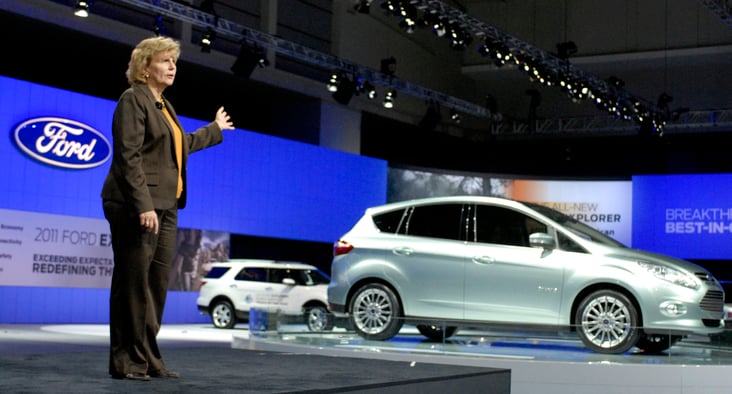This post is one in a series featuring the complete slate of advanced energy technologies outlined in the report This Is Advanced Energy.

Image courtesy of Ford Motor Company.
Hybrid electric vehicles (HEVs), commonly called “hybrids,” are powered by a combination of a conventional internal combustion engine (typically gasoline-fueled) and a battery-powered electric motor, usually featuring a nickel-metal hydride or lithium-ion battery. The hybrid drivetrain works in several ways to improve fuel economy. Having a larger battery than a conventional vehicle allows the engine to turn off at low speeds, when driving downhill, and while idling. Since the electric motor can assist with acceleration, a smaller gasoline engine is used, which reduces fuel consumption. The integrated system also allows the gasoline engine to operate in a more efficient power range.
When braking, the electric motor can run “backward” and act as a generator in a process called regenerative braking. This feature extends the vehicle’s electric capacity by charging the battery with energy that is normally lost to friction in the brakes. HEVs do not plug in to recharge the batteries, and the batteries are not sized to provide signi cant electric-only range. Instead, the combination of regenerative braking and overall drivetrain optimization result in improved fuel economy. Some of the best selling hybrids include the Toyota Prius, Honda Accord Hybrid, Ford Fusion, and the Lexus GS Hybrid, and new hybrid models are introduced by automakers every year.
In 2014 there was strong worldwide growth in revenue from hybrid vehicle sales, which rose by more than 40% to $74 billion. The United States was an early adopter of HEV technology and in 2014 accounted for 16% of the total market. HEV sales in the United States have increased from almost zero a decade ago to a little over 450,000 units in 2014, or about 2.7% of total vehicle sales. HEVs today cost slightly more than traditional vehicles, but as battery costs decline and manufacturing scales up, vehicle costs are expected to fall. Hybrid vehicles offer significant benefits for stop-and-go traffic, which lends the technology to commercial applications such as city buses and local delivery trucks. The United Parcel Service (UPS) has deployed 380 HEVs in states across the country, including Alabama, New Jersey, Minnesota, and Kentucky. These vehicles deliver a 35% improvement in fuel efficiency. Global sales of electric and hybrid electric buses (with hybrid diesel engines) are expected to increase from 16,000 units in 2014 to nearly 163,000 by 2023.
HEVs offer significant economic benefits via fuel savings, with the most efficient light-duty HEV getting 50 mpg. Average fuel costs for a 100-mile trip are estimated at 65% of a conventional vehicle. These fuel savings mean that HEVs also help to decrease domestic reliance on imported petroleum.
